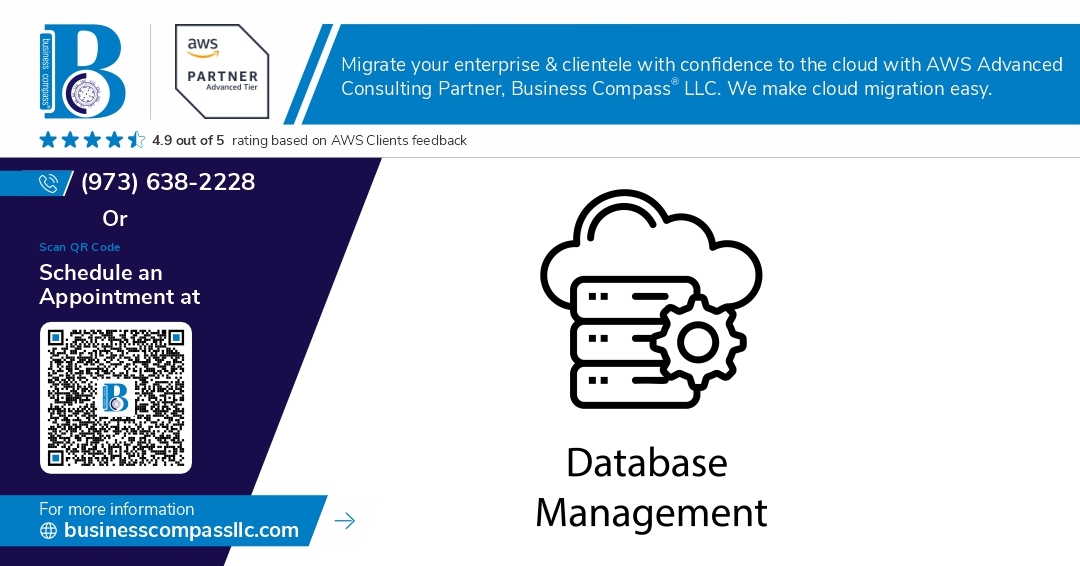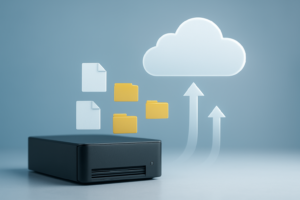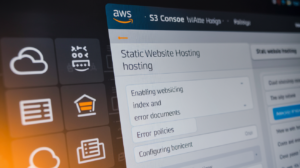Ever accidentally brought down your entire app because you changed one tiny database field? Yeah, that’s the monolith nightmare many developers live with daily.
The microservices architecture offers salvation, but only if you implement it correctly. One of the most critical decisions you’ll face is whether to use database per service pattern or share a single database across services.
When building microservices with separate databases, you’re creating true independence between components. This approach isn’t just architectural purity—it solves real problems that keep development teams stuck in deployment hell.
But how do you know when separate databases make sense, and when they’re just adding unnecessary complexity? The answer lies in understanding the exact tradeoffs you’re making.
Understanding Microservices Architecture
Core principles of microservices design
Think of microservices as small, independent teams working on separate parts of a product. Each one has a specific job and doesn’t need to know how the others work internally.
Good microservices follow these principles:
- Single responsibility: Each service handles one business capability. Period.
- Independence: Services can be deployed without affecting others.
- Decentralization: No central brain controlling everything – each service makes its own decisions.
- Black-box implementation: Services communicate through APIs without exposing their internal workings.
- Domain-driven design: Services are organized around business domains, not technical functions.
Evolution from monolithic to microservice architecture
Remember those massive, all-in-one applications where changing one tiny feature meant rebuilding and redeploying the entire system? That’s the monolith approach.
The journey typically goes like this:
- The monolith phase: Everything bundled together – one codebase, one database.
- The breaking point: As complexity grows, development slows to a crawl.
- The transition: Teams identify bounded contexts and extract services one by one.
- The microservices reality: A network of specialized services that can evolve independently.
Many successful companies didn’t start with microservices – they evolved there when they needed to scale.
Benefits of service isolation
Isolation isn’t just a technical detail – it’s a superpower. When services are truly isolated:
- Teams can work at their own pace without stepping on each other’s toes
- A failure in one service doesn’t cascade through the entire system
- You can update services independently without complex coordination
- Different services can use the technology stack that fits their specific needs
This isolation extends to data too. When each service owns its data, it doesn’t need to worry about other services making unexpected changes.
Scalability advantages in distributed systems
The real magic happens when you need to grow. With microservices:
- You can scale just the busy services instead of the entire application
- Different services can scale in different ways (vertical vs. horizontal)
- Resources are allocated more efficiently to where they’re actually needed
- Geographic distribution becomes more practical – put services closer to their users
This granular scaling means you’re not wasting resources on components that don’t need them. Your order processing service might need serious horsepower during a sale, while your content management service hums along with minimal resources.
The Database Per Service Pattern
Definition and key characteristics
The Database Per Service pattern is exactly what it sounds like – each microservice gets its own dedicated database. No sharing, no crossing boundaries. Each service exclusively owns and manages its data.
Think of it like everyone having their own refrigerator instead of fighting over shelf space in a communal one. Your microservice completely controls its data storage – schema design, query optimization, scaling decisions, the works.
This pattern enforces a critical boundary: services can only access their own data directly. Need data from another service? You’ll have to ask nicely through its API.
The key characteristics include:
- Complete data ownership by individual services
- Freedom to choose different database technologies for different services
- Independent scaling of data storage based on specific service needs
- Physical enforcement of the “don’t touch my data” rule
How data ownership works in practice
In traditional architectures, data ownership gets messy fast. Multiple applications reading and writing to the same tables? Recipe for disaster.
With database-per-service, boundaries are crystal clear. If the Order Service needs to know about customers, it doesn’t peek into the Customer Service’s database – it calls the Customer Service API.
This changes how teams work. The Customer team becomes truly responsible for their domain. They’re the experts. They decide how customer data is structured, stored, and accessed.
Teams start thinking in terms of contracts rather than shared tables. The mindset shifts from “I’ll just query what I need” to “I’ll design clear interfaces for others to use.”
Decoupling data storage from service implementation
Here’s where things get interesting. When your service owns its database completely, you can change the underlying storage without anyone else noticing.
Started with PostgreSQL but now need a graph database for part of your functionality? No problem. Need to migrate from MongoDB to Cassandra? That’s your business and yours alone.
This decoupling creates freedom. Your service contract (the API) stays the same while everything beneath can evolve independently.
Database technology becomes an implementation detail. Your consumers don’t care if you’re using MySQL, DynamoDB, or storing data in text files (though please don’t).
Trade-offs between shared and dedicated databases
Nothing’s free in architecture. The database-per-service pattern comes with trade-offs:
| Shared Database | Database Per Service |
|---|---|
| Simple transactions across domains | Complex distributed transactions |
| Single technology to master | Multiple database technologies to manage |
| Easier reporting and analytics | Requires data aggregation solutions |
| Lower operational overhead | Higher infrastructure costs |
| Tight coupling | Loose coupling |
The biggest challenge? Data consistency. With a single database, ACID transactions handle consistency. With separate databases, you’re in eventual consistency territory, which requires different thinking.
Real-world implementation examples
Netflix embraced this pattern years ago, allowing teams to choose databases that best fit their service needs. Some services use Cassandra for high availability, others MySQL for transactions, and others use specialized time-series databases.
Amazon’s retail platform operates on similar principles, with hundreds of services each managing their own data stores. When you place an order, multiple independent services with separate databases coordinate to process it.
Uber uses this approach to achieve massive scale, with different databases optimized for different aspects of their business – from real-time driver locations to payment processing.
These companies didn’t choose this pattern because it’s easier – they chose it because it enables teams to move faster independently and scale different parts of the system according to specific needs.
Technical Advantages of Separate Databases
Independent Scaling of Data Storage
Breaking up your data stores gives you a superpower: scaling exactly what needs scaling.
Think about it – your user profile service might handle a few updates per day, while your product catalog gets hammered with thousands of queries per second. With separate databases, you can beef up that product database with more resources without wasting money on your barely-used user database.
I’ve seen teams get stuck in scaling nightmares when using a single database. One service’s growth drags everything down, and soon you’re paying for premium database tiers just because one piece of your app got popular.
Technology Selection Flexibility for Specific Use Cases
One size definitely doesn’t fit all when it comes to databases.
Your authentication service might work perfectly with a simple key-value store. Your product recommendation engine probably needs a graph database. Your financial transactions? That’s SQL territory all day.
When you separate databases by service, you pick the right tool for each specific job:
- Time-series data? InfluxDB might be perfect
- Complex relationships? Neo4j could be your best friend
- Document storage? MongoDB shines here
No more forcing square data into round database holes just because “that’s what we use everywhere.”
Improved Fault Isolation and Resilience
Database failures happen. The question is: will your entire system crash, or just one piece?
With separate databases, problems stay contained. If your notification service database goes down, users can still browse products, add items to carts, and complete purchases.
I’ve worked with systems where a single database hiccup brought down the entire platform. Not fun explaining that to customers or executives.
Enhanced Security Through Data Segregation
Separate databases create natural security boundaries. Your payment processing microservice can lock down its database with fortress-level security, while your product catalog database might have more relaxed controls.
This means:
- Different encryption requirements per service
- Tailored access controls for each data store
- Reduced attack surface if one database is compromised
Security teams love this approach because it follows the principle of least privilege – each service only accesses exactly what it needs.
Solving Business Challenges with Database Separation
Faster feature delivery with reduced dependencies
Breaking up your monolithic database is like removing those annoying group project dependencies from college. Remember waiting on that one person who always delivered late? That’s your monolith.
With separate databases, your teams stop playing the waiting game. Team A can ship their payment feature without wondering if Team B’s inventory update will break something. Each team controls their own data destiny.
The math is simple: fewer dependencies = faster shipping. When the order processing team needs to add a field, they don’t need approval from five other teams. They just do it and deploy.
Companies that make this switch typically see deployment frequencies jump from monthly to daily. That’s not just marginally better—it’s a complete transformation of your delivery pipeline.
Team autonomy and ownership benefits
Who cares more about their house: owners or renters? Ownership creates accountability, and the same applies to databases.
When teams own their data, magical things happen:
- Engineers become invested in data quality
- Teams build deeper domain expertise
- Performance issues get solved faster (because it’s their problem)
- On-call rotations become more manageable
I’ve seen teams transform from “not my problem” attitudes to proactive guardians once they truly own their data. With a shared database, finger-pointing is the default response to issues. With separation, there’s nowhere to hide.
Simplified compliance management
Compliance requirements keep multiplying like rabbits. GDPR, CCPA, HIPAA—the alphabet soup never ends.
Separate databases let you apply different security controls based on data sensitivity. Your payment service can implement bank-level encryption while your product catalog uses simpler controls.
The real beauty comes when compliance audits happen. Instead of combing through a monolithic database with mixed data types, you can scope audits to specific services. This compartmentalization reduces audit scope and costs dramatically.
Supporting different data access patterns
Not all data is created equal. Your product catalog needs lightning-fast reads, while your order system prioritizes consistent transactions.
With separate databases, you can pick the right tool for each job:
- High-read services? Try a document store like MongoDB
- Complex relationships? A graph database might work
- Heavy analytics? Columnar databases shine here
- ACID transactions? Traditional relational DBs still rule
This “polyglot persistence” approach means each service uses a database optimized for its specific access patterns. Your recommendation engine might work better with a graph database, while inventory tracking needs strong consistency from a relational database.
Trying to make one database type fit all these patterns is like wearing hiking boots to a swimming pool—technically possible, but definitely not optimal.
Implementation Strategies and Best Practices
Data Migration Approaches from Monolithic Databases
Breaking up a monolithic database isn’t something you do overnight. It’s like moving from a large house to several apartments—you need a plan.
Start with the strangler pattern. Identify bounded contexts in your monolith and gradually migrate one service at a time. This keeps your system running while you transform it.
For actual migration, you’ve got options:
- Dual-write pattern: Write to both old and new databases during transition
- Change Data Capture (CDC): Monitor database logs to replicate changes
- ETL processes: Extract, transform, and load data in batches
Most teams find a hybrid approach works best. You might use CDC for real-time syncing of critical data while handling historical data with ETL.
Managing Data Consistency Across Services
Maintaining consistency without a single database is tricky. Welcome to the world of eventual consistency.
Instead of immediate consistency (which would defeat the purpose of separation), embrace patterns like:
- Event-driven architecture: Services publish events when data changes
- Saga pattern: Coordinate complex transactions across services
- CQRS: Separate read and write operations
Remember that BASE (Basically Available, Soft state, Eventually consistent) often works better than ACID in microservices.
Handling Transactions Spanning Multiple Databases
Cross-service transactions are a pain point. You can’t just use distributed transactions—they create tight coupling.
The saga pattern shines here. Break your transaction into a sequence of local transactions, each publishing an event that triggers the next step.
Order Service → Payment Service → Inventory Service → Shipping Service
Include compensating transactions to roll back changes if something fails. It’s more complex but preserves service autonomy.
Effective Service Boundaries Identification
Drawing boundaries between services is more art than science. Done wrong, you’ll create a distributed monolith—all the complexity with none of the benefits.
Focus on:
- Business capabilities: Group by business function, not technical layer
- Data cohesion: Data that changes together stays together
- Team structure: Conway’s Law suggests your architecture will mirror communication patterns
Domain-Driven Design concepts like bounded contexts and aggregates are your best friends here.
Data Duplication Considerations and Solutions
In microservices, some duplication isn’t just acceptable—it’s necessary. But uncontrolled duplication creates nightmares.
Smart duplication strategies include:
- Reference data replication: Copy read-only reference data to services that need it
- Derived data: Store only what you need in the format you need it
- Cache synchronization: Use tools like Redis to share frequently accessed data
The key is having a single source of truth for each data element, with clear ownership and update pathways.
Monitor duplicated data carefully—synchronization issues can be subtle and painful to debug.
Common Challenges and Solutions
Dealing with cross-service queries
Breaking up your data across multiple databases sounds great until you need information from several services at once. It’s like having ingredients stored in different rooms when you’re trying to cook a meal.
The most common approach? API composition. Your front-end or API gateway fetches data from multiple services and stitches it together. Simple but can get slow if you’re calling many services.
For more complex scenarios, consider implementing a CQRS (Command Query Responsibility Segregation) pattern with specialized read models. You can maintain a dedicated database that contains pre-joined data from multiple services, updated through events.
Some teams also implement a data federation layer that acts like a virtual database, translating a single query into multiple queries across services.
Implementing distributed transactions
The microservices world has a dirty little secret: the traditional ACID transactions you relied on with monoliths are pretty much impossible across separate databases.
Instead of fighting physics, embrace eventual consistency with the Saga pattern. A saga breaks down a transaction into a sequence of local transactions, each publishing events that trigger the next step.
Order Service → Payment Service → Inventory Service → Shipping Service
When things go wrong (and they will), compensating transactions roll back completed steps:
Shipping Service ❌ → Inventory Service Rollback → Payment Service Rollback → Order Service Rollback
Tools like Axon, Eventuate, and NServiceBus can help implement these patterns without reinventing the wheel.
Managing database schema changes
Changing database schemas in a microservice architecture isn’t just a technical challenge—it’s a coordination nightmare. You can’t just update everything at once.
Follow these practices to avoid breaking your system:
- Make additive-only changes when possible (add fields, don’t remove)
- Support multiple schema versions simultaneously during transitions
- Implement consumer-driven contract testing to catch breaking changes early
- Use database migration tools like Flyway or Liquibase to version your schemas
For complex migrations, the expand-contract pattern works wonders:
- Expand: Add new fields/tables without removing old ones
- Migrate: Move data and update services to use new schema
- Contract: Remove old schema elements when no longer needed
Monitoring and observability tactics
When your data lives in a dozen different databases, traditional monitoring approaches fall apart. You need a strategy that gives you visibility across your entire system.
Start with distributed tracing tools like Jaeger or Zipkin to track requests as they flow between services and databases. Add correlation IDs to every transaction so you can follow the breadcrumb trail.
Database-specific metrics to watch:
- Query performance across services
- Connection pool utilization
- Transaction volumes and error rates
- Replication lag in database clusters
Set up centralized logging with tools like ELK stack or Graylog to aggregate logs from all services and databases. The real magic happens when you combine logs, metrics, and traces to get the full picture.
Don’t forget data-specific alerts—watching for data inconsistencies between services can catch problems before your users do.
Case Study: Database Per Service in Action
A. Problem statement and initial architecture
Picture this: an e-commerce company drowning in their monolithic codebase. Their single database was handling everything – inventory, orders, customer data, payments, shipping. As traffic grew, their system would regularly buckle during sales events.
Their database was the bottleneck. Any schema change required careful coordination across teams. Feature deployments happened monthly because nobody wanted to risk breaking the entire system. Database queries became increasingly complex, with joins across unrelated domains slowing everything down.
The monolith used a beefy PostgreSQL instance with 147 tables. Scaling meant throwing more hardware at the problem – an expensive band-aid that wouldn’t work forever.
B. Implementation process and decision points
The migration wasn’t a big-bang approach. They started with the inventory service – a relatively self-contained domain with clear boundaries.
Key decision points included:
-
Database technology selection – They stuck with PostgreSQL for inventory but chose MongoDB for reviews, where schema flexibility mattered more.
-
Data migration strategy – They implemented a dual-write pattern where operations temporarily wrote to both old and new databases.
-
Service boundaries – They debated intensely about whether “shopping cart” belonged with orders or as its own service (they chose the latter).
-
Transaction handling – Without distributed transactions, they implemented compensating transactions and eventually consistent patterns.
The team also built a robust event backbone using Kafka to handle cross-service communication.
C. Technical and organizational outcomes
The payoff was substantial. System stability improved dramatically – isolated database failures now affected only single services instead of bringing down the entire platform.
Deployment frequency increased from monthly to multiple times daily. Teams gained autonomy to make schema changes without cross-team coordination. During Black Friday, they could scale individual services based on specific load patterns rather than scaling everything.
Organizationally, teams reorganized around service boundaries, taking full ownership from API to database. This eliminated the database administration bottleneck and spread database expertise across teams.
Performance improved for most services, though some complex queries that previously used joins now required multiple service calls.
D. Lessons learned and optimization opportunities
The transition wasn’t without pain. Cross-service reporting became significantly more challenging. They eventually built a dedicated data lake for analytics to address this.
Data duplication introduced consistency risks. The team learned to be thoughtful about what data truly needed replication and what could be fetched on-demand.
Service boundaries weren’t always perfect. The cart and order services frequently needed each other’s data, suggesting they might have belonged together after all.
Other lessons:
- Start with a robust event system before attempting service separation
- Document database decisions and patterns to maintain consistency
- Build monitoring that spans services to trace transactions
- Over-communicate during migration to prevent duplicate efforts
- Be pragmatic – some components remained in the monolith where separation costs outweighed benefits
The team continues optimizing by implementing CQRS in high-read services and exploring graph databases for complex relationship data.
Separate databases are fundamental to achieving the true potential of microservices architecture. By implementing the database-per-service pattern, organizations gain technical advantages including improved scalability, enhanced fault isolation, and the freedom to select database technologies optimized for each service’s specific needs. This approach also solves critical business challenges by enabling independent scaling, facilitating team autonomy, and providing better alignment with business domains.
As you embark on implementing this pattern, remember to carefully consider implementation strategies including data synchronization mechanisms, transaction management approaches, and comprehensive monitoring solutions. While challenges like data consistency and increased operational complexity exist, the right combination of solutions—from event-driven architectures to mature DevOps practices—can help overcome these hurdles. The real-world success stories demonstrate that when properly executed, the database-per-service pattern delivers on the promise of truly independent, resilient, and scalable microservices systems.




















